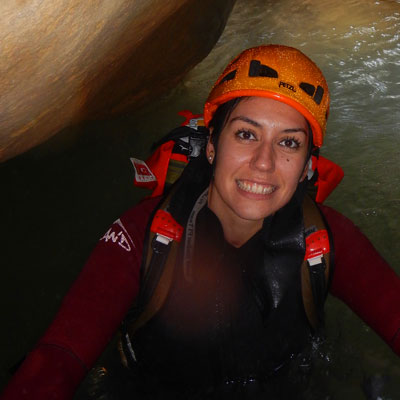Canyoning in Madeira
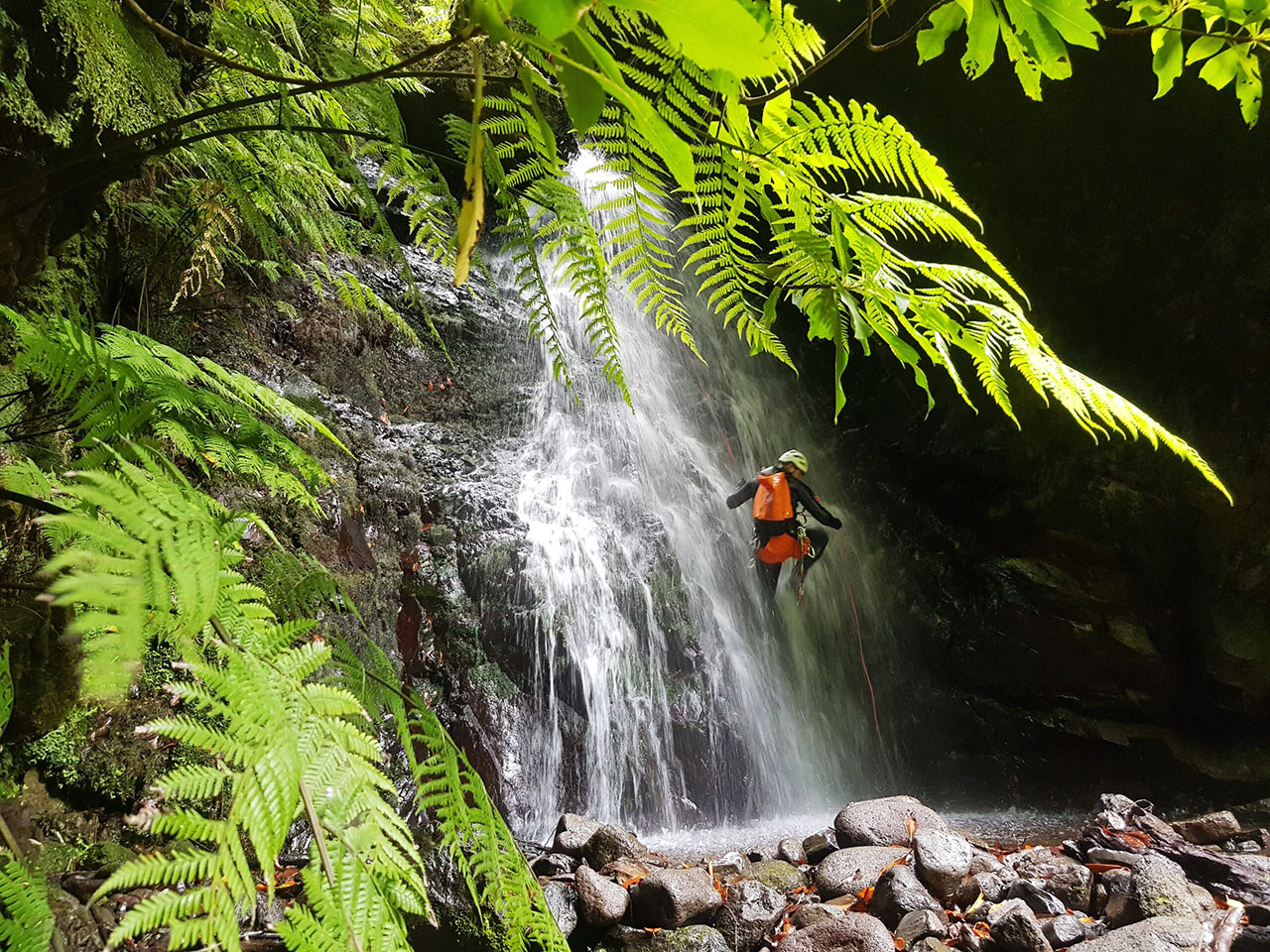
Can you imagine travelling to an island where there are grandiose waterfalls in the middle of the jungle? Surrounded by volcanic rock and lush vegetation, colossal sized ferns and a mesmerising green colour... That is the island of Madeira.
Discovering Madeira for the first time, is something that touches you deeply, in some little corner of your heart, but discovering Madeira as a canyoner, that's a dream come true!.
TABLE OF CONTENTS
- MADEIRA, one of the world's top 5 canyoning destinations
- Three canyons not to be missed
- Ribeira Funda Ravine
- Barranco Voltas Matilde
- Folhado Gorge
- Formation, geology and volcanism
- History
- Levadas
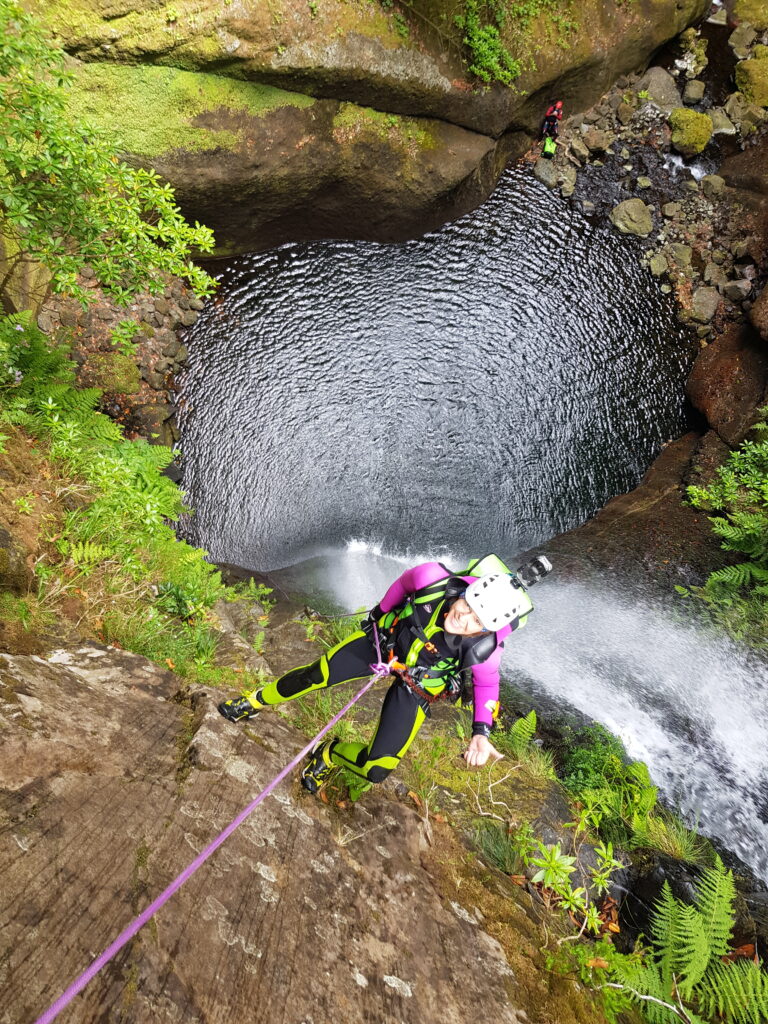
Madeira, one of the top 5 canyoning destinations in the world
The island of Madeira is considered one of the top 5 canyoning destinations in the world and is the best island destination in Europe, according to the World Travel Awards 2021.
The first time I travelled to Madeira, I found the height and grandeur of its cliffs fascinating, I couldn't stop looking up, but when I returned years later, as a canyoner, I descended some of its ravines and was completely impressed by the wildness and ruggedness of its landscapes.
Huge waterfalls, lush vegetation and a mysterious aura
When you go into its ravines, you live a real adventure, one of those that you will never forget... The morphology of its ravines with large waterfalls vertical in character, surrounded by lush vegetation and large ferns of such an intense green that you can't stop looking at it... and of course, of the characteristic basaltic rock (volcanic) that envelops them in an aura of mystery, giving them personality and strength.
If you add to that the days when the fog rises and penetrates the ravines, you feel the landscape enveloping you and the descent becomes a a real adventure!
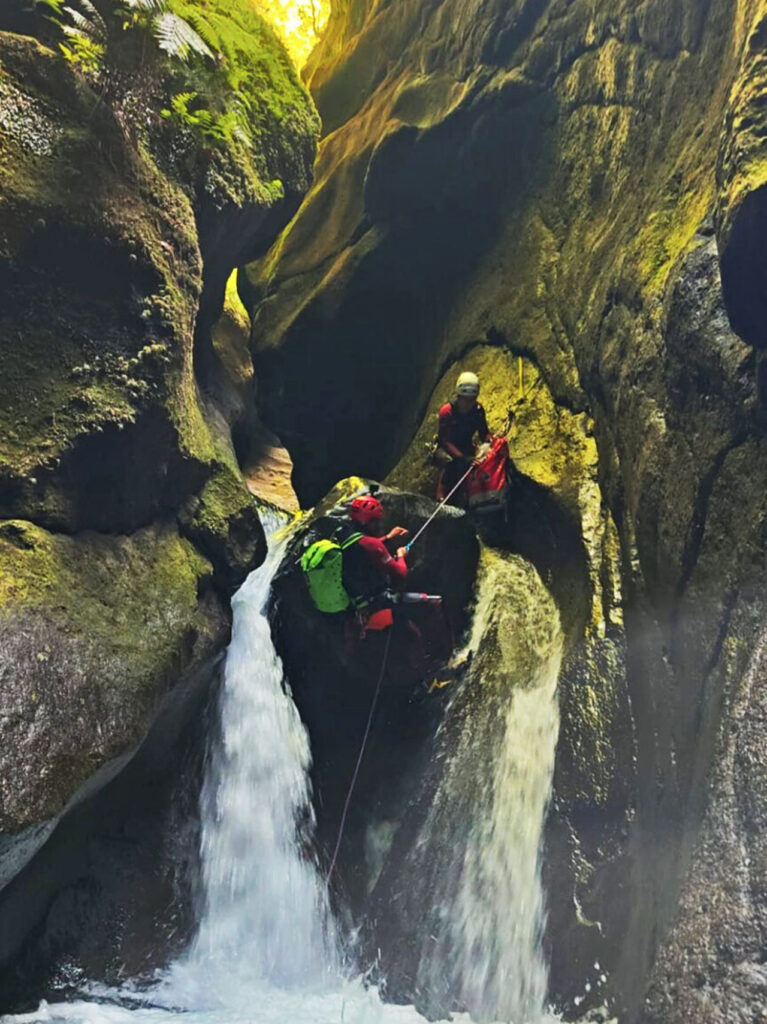
Many canyons are so long that they are divided into two stretches
Located in the north of the island, many of its ravines are made up of an upper and a lower section, due to the length, number of abseils and slope of the ravines.
The openers considered dividing them into sections, thus giving us the option of doing the upper section one day and the lower section the other day. To descend them in an integral way would be catalogued as complex descents only for expert canyoners in good physical shape, given their great length.
The access to the lower sections is via the famous levadas (levadas) (water channels that transport water from the ravines to different places / villages on the island), as well as when we want to leave the upper sections.
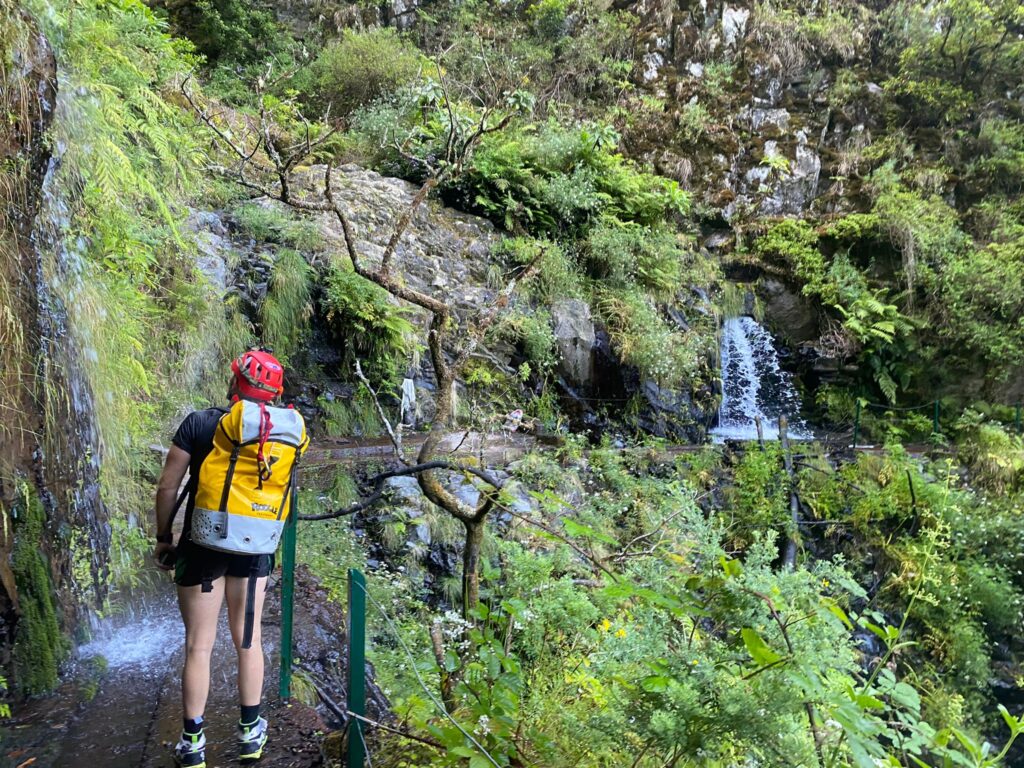
Three canyons not to miss: Ribeira Funda, Voltas Matilde and Folhado
RIBEIRA FUNDA RAVINE
Difficulty: medium-high; Length: 600m; Drop: 195m; No. of rappels: 9; Max. rappel: 60m;
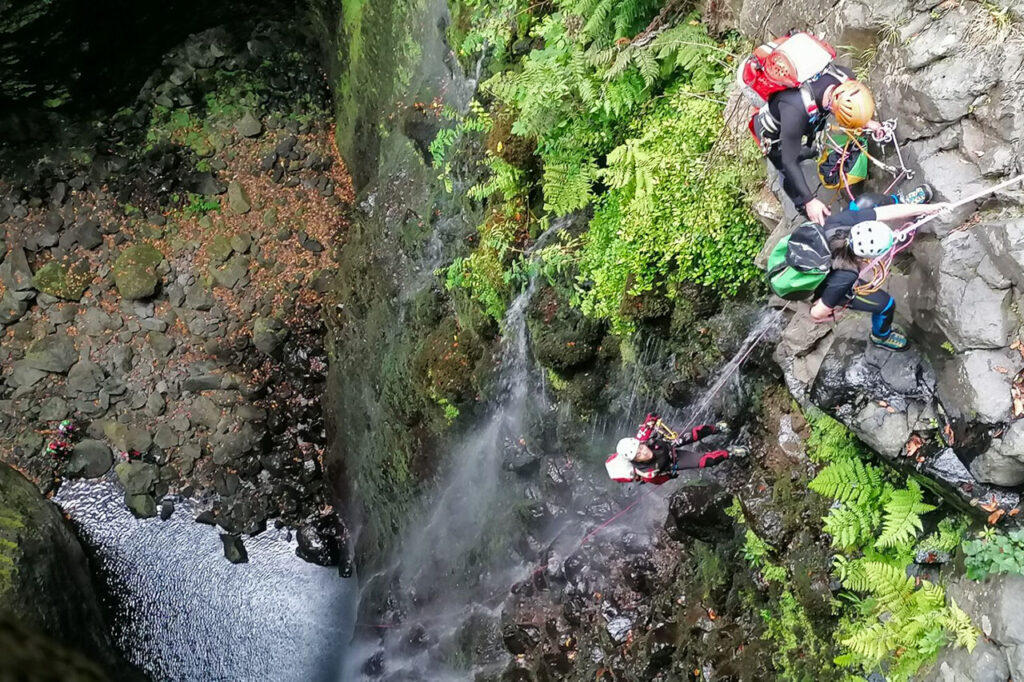
This ravine located just a few metres from the Atlantic OceanIt is a beautiful and playful descent that will not leave you indifferent until you reach the end, where the pleasant surprise of a fascinating view of the ocean awaits you from the last abseil.
When you enter Ribeira Fundayou feel their explosion of colours that play with the black of the basalt rock and the green of its vegetation.
In it awaits us a large 55-metre waterfall very open, which we will descend under the steep fall of the water, allowing us in the months of low water a suitable flow for the descent, we can also enjoy some waterfalls, depending on its flow.
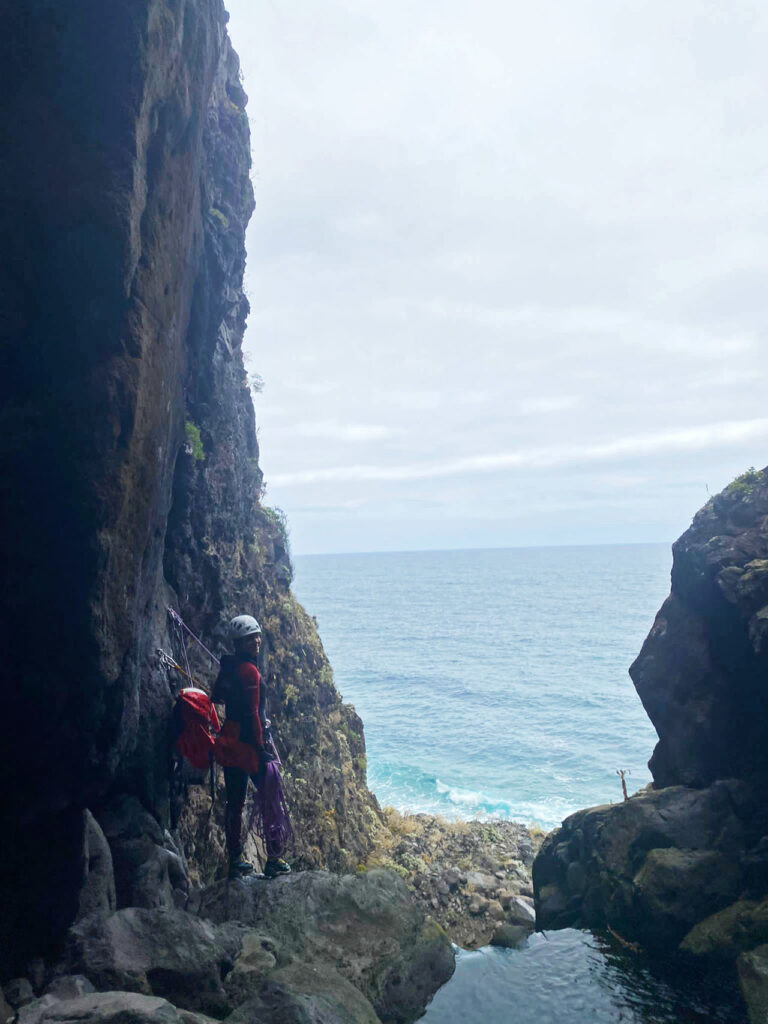
The descent consists of 9 abseils and some dexterity and this is a technical descent that requires preparation and good rope handling..
With an approach time of only 20 minutes on foot, it is a very complete descent and a must to do on your visit to the island!
BARRANCO VOLTAS MATILDE
Difficulty: beginner-medium; Length: 900m; Gradient: 300m; No. of rappels: 12; Max. rappel: 28m;
It is a ravine of beginner/intermediate levelideal for abseiling and to start your canyoning week on the island...!
Located in Chao da RibeiraTo reach it, we climb a beautiful path that soon turns into stairs that in a short distance gain height, and little by little, we are introduced in the Madeira's magnificent laurel forestThis offers us a beautiful postcard landscape on its approach.
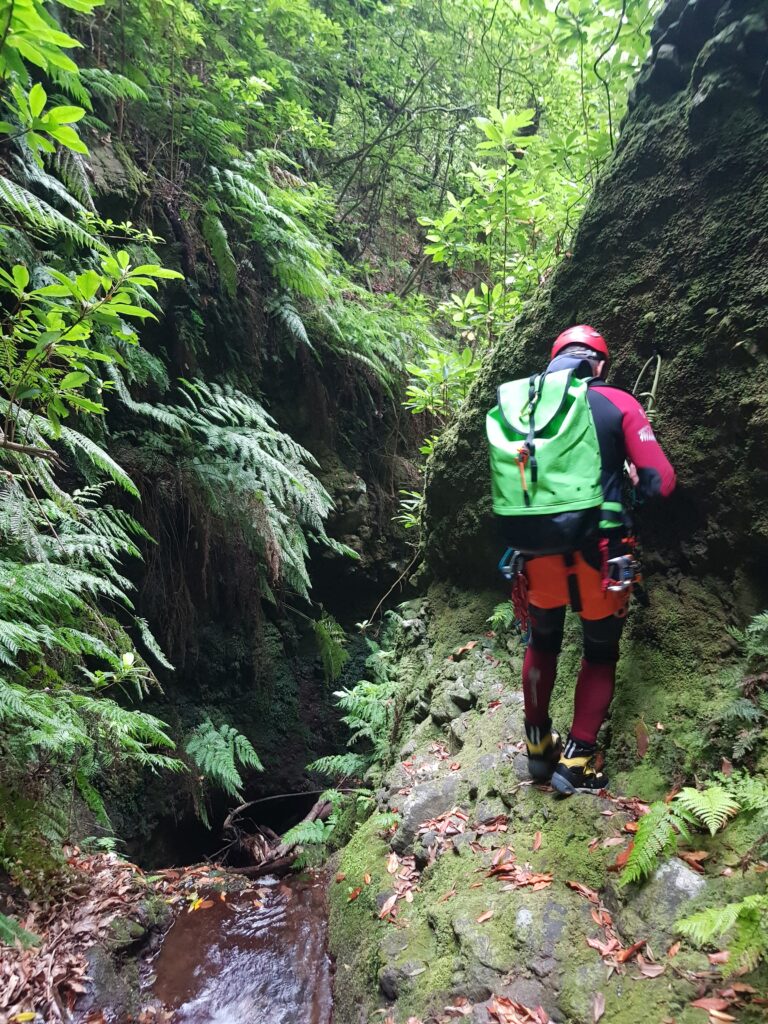
With a extension of 900 metres and a 300 metres difference in altitudeThe descent is a descent with 12 waterfallsone of them of up to 28 metres high.
Surrounded by a magical environment of ferns and laurisilva, it is worth a visit.
BARRANCO DO FOLHADO
Difficulty: medium; Length: 700m; Drop: 300m; No. of rappels: 14; Max. rappel: 27m;
We meet with a canyon of longer duration than previous canyonsThe decline of the somewhat easier at the start and that little by little it is becoming a more technical gully with waterfalls that will not leave you indifferent.
Also located in Chao da Ribeira, Folhado is a decline of 14 rappelshaving its longest rappel 27 metres.
With a demanding approach on foot of more than 1 hour, the access will be via the famous and dreaded stairs of the Lombo Barbinhas road. No more and no less than approximately 1,000 stairs!
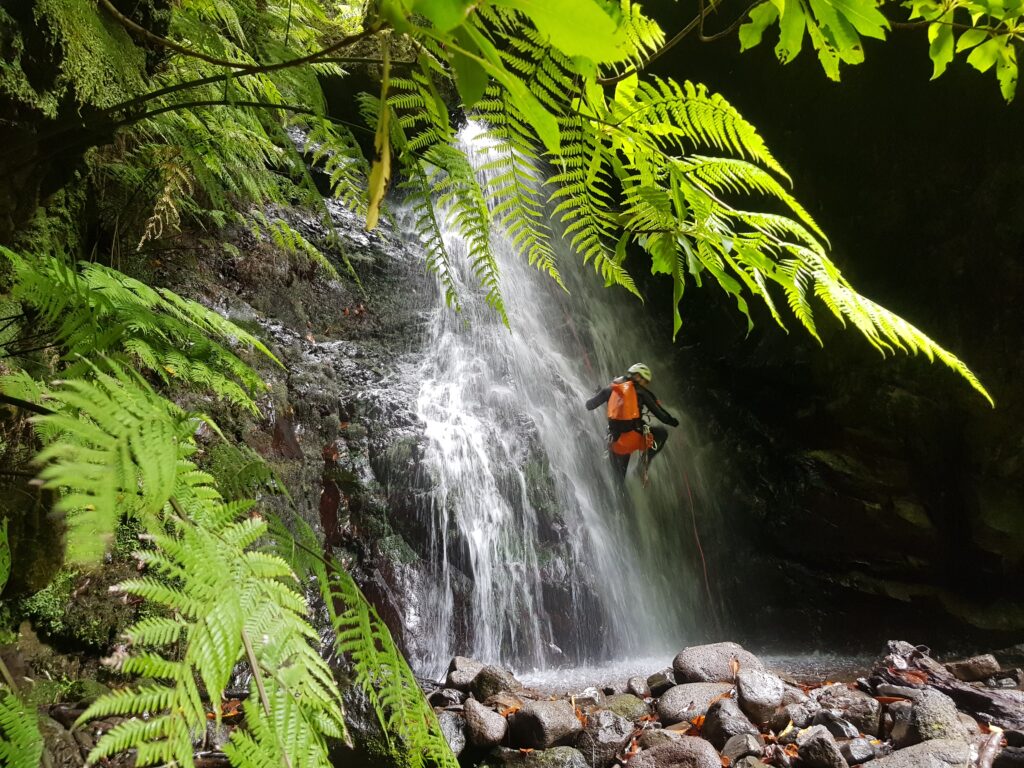
In this ravine the lush vegetation is always present. The beauty of its waterfalls and its surroundings give you the feeling of being in the jungle itself. We will also enjoy its water rappels.
Before reaching its end, in the last three abseils, Folhado shares these last three waterfalls with the neighbouring ravines, which are Seixal Inferior and Hortela Inferior.
This means that the last three abseils belong to the 3 canyons equally, and whenever we do one or the other canyon, we will share the last three abseils, finishing all of them in the same place, undoing part of their approach on the way back to the car.
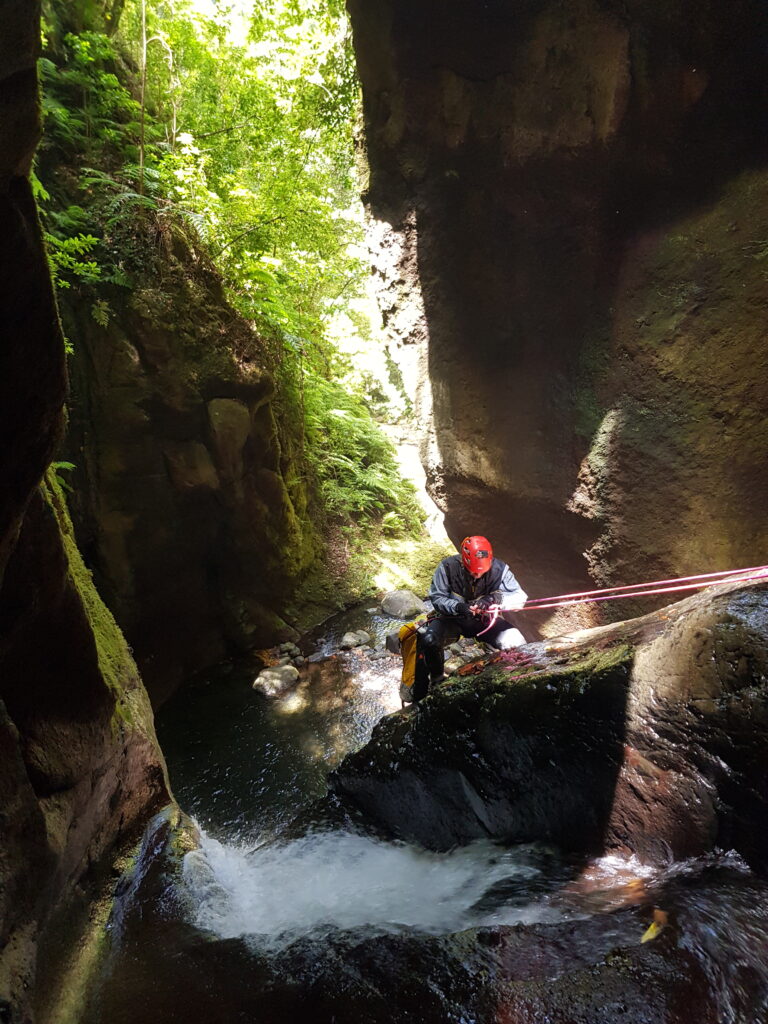
FORMATION, GEOLOGY AND VOLCANISM
Madeira is a neighbour of the islands Azoresof the islands Canary Islands and the islands of Cape Verdeas part of the Macaronesian Islands.
The Madeira archipelago consists of the island of Madeira, Porto Santo and the Desert Islands.
They are located at a distance of approximately 1,000 kilometres off the coast of Portugal.
Funchal, the main city and port on the south coast of the island, it is 660 kilometres from the African coast.
Madeiraof subtropical climate and with volcanic mountains cut by deep valleys to the sea, it has an elongated shape from east to west: its length is approximately 55 kmand its width of 24 kmwith 160 km of coastline. The average altitude is 1,300 metres, with the most outstanding being the Ruivo Peak (1,862 metres)the Pico das Torres (1,850 metres) and the Pico do Arieiro (1,818 metres). The coasts are steep and sandy beaches are rare. On the south coast, to the west of Funchal, rises the Cabo Girao, one of the world's highest cliffs.
The archipelago was formed due to volcanic activity. The rugged character of Madeira's coastline continues in the same way below sea level.
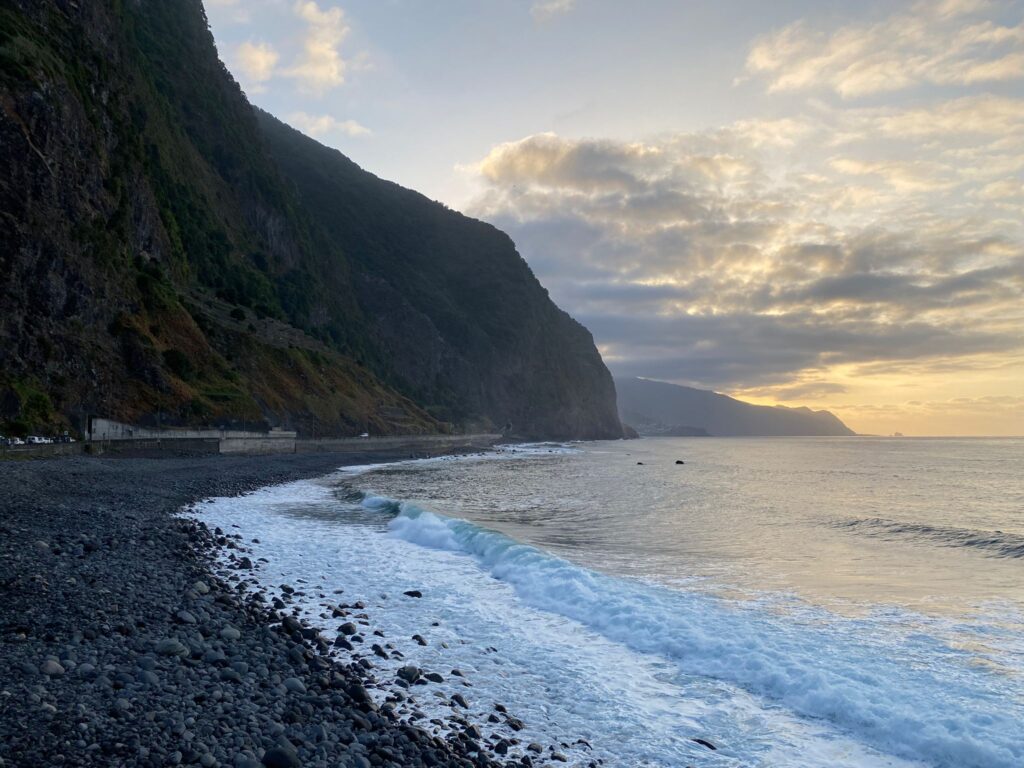
HISTORY
The laurel forest that covered the island before its colonisation and gave it its name (madeira means "wood" in Portuguese), was almost completely burned by the first settlers, and only a few areas in the northern valleys of the island have been preserved. It was inscribed on the UNESCO World Heritage List in 1999.. But the forest has recovered and spread with European and tropical species introduced by settlers that now coexist with the endemic species. The humidity of the north favours the growth of exuberant vegetation, including almost vertical slopes, and even 70 species of ferns.
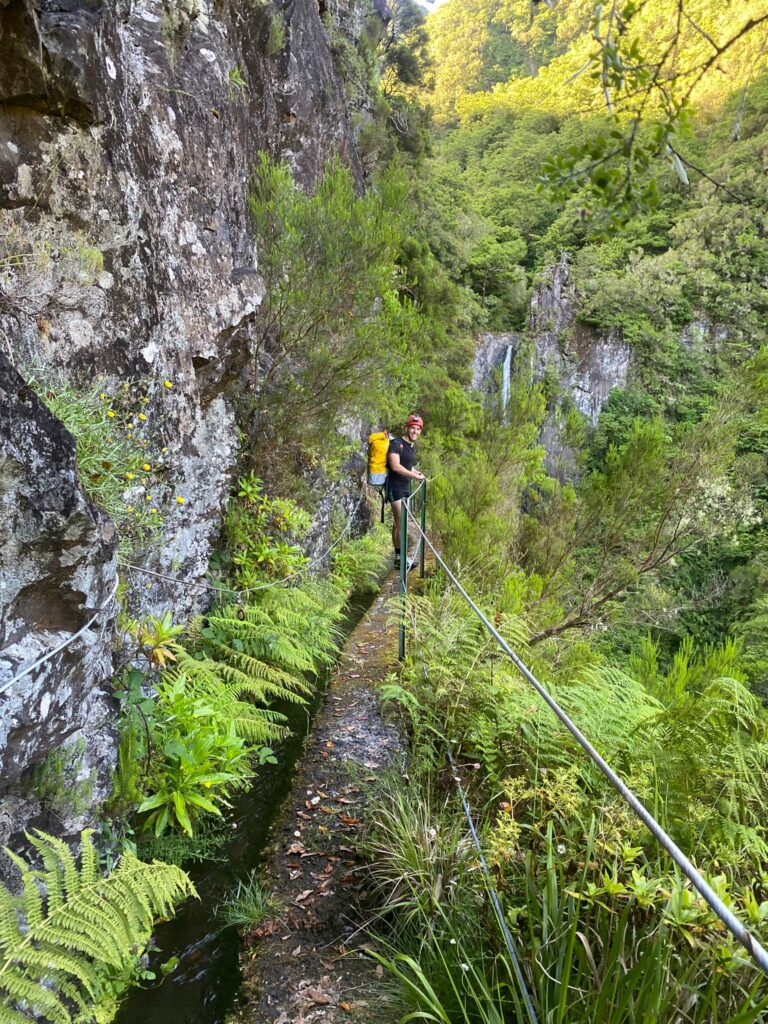
LEVADAS
In the XVIth centuryThe Portuguese started to build the levadas to irrigate sugar cane plantationsAt that time, sugar was known as "white gold", and very soon the vineyards that would produce Madeira wine. At that time, the construction, made of wood and volcanic stone, was of a private nature for irrigation purposes, a few were used to carry water from one side of the island to the other, from north to south.
In the 19th century, the state began to subsidise the construction of levadas and cement made its appearance. From this period, the levada Velha do Rabaçalbuilt between 1835 and 1860, and which today is the starting point for one of the most important excursions the island's most accomplished, the one that visits the levadas of Risco and of the 25 Fontes.
At present, the levadas have become one of the island's attractions.The park, which is a man-made work of art, allows millions of onlookers to hike the thousands of kilometres that make up this great work of art.
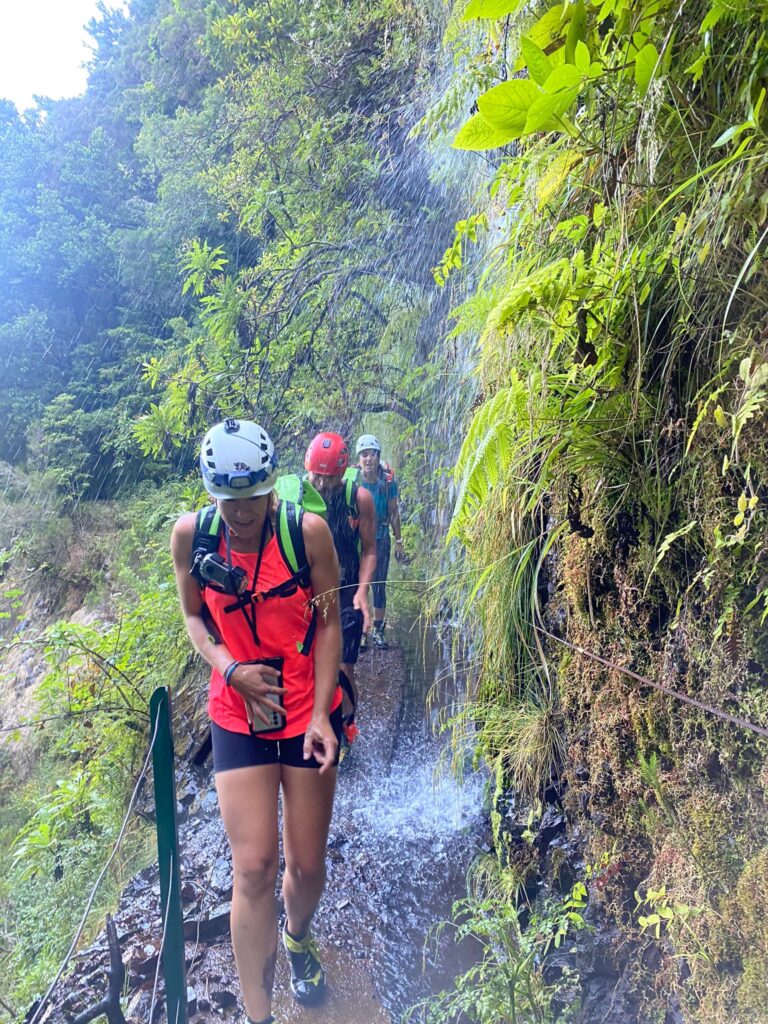
With the new constructions, the network has more than 2,000 km and 35 km of tunnels..
Undoubtedly, of great beauty, you cannot miss some of the most beautiful ones, such as the following:
-Levada de las 25 FontesThe most visited on the island.
-Caldeirao VerdeYou can see an 80-metre waterfall.
-Serra do FaialAt the beginning there is a trout farm and numerous orchids.
-Furadois one of the oldest on the island.
And many more...
YOU MAY BE INTERESTED IN
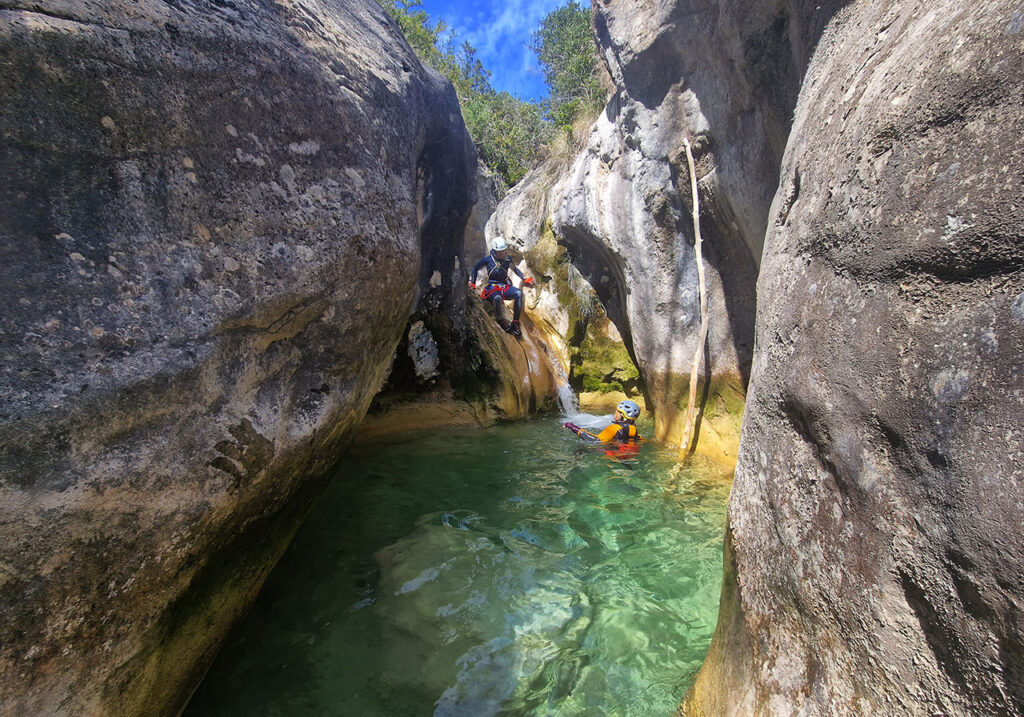
5 Canyons in the Catalan Pyrenees not to be missed
The Catalan Pyrenees hides some real gems for canyoning lovers. Discover the 5 canyons you can't miss.

